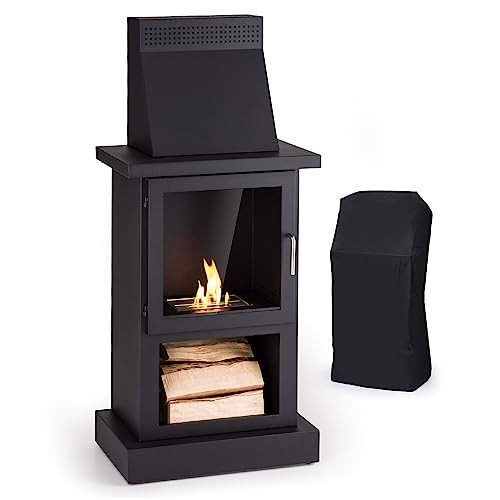10 Facts About Traditional Fireplaces UK That Will Instantly Make You Feel Good Mood
The Timeless Appeal of Traditional Fireplaces in the UK
Traditional fireplaces have actually long been important to homes across the United Kingdom, transcending simple utility to end up being focal points of warmth, comfort, and aesthetic appeal. This post explores the long-lasting appeal of traditional fireplaces, exploring their history, design variations, setup considerations, and their modern-day relevance.
Historic Significance of Fireplaces
The fireplace has played a central role in British homes given that middle ages times. Originally, they were necessary for heating and cooking. Over the centuries, with the introduction of main heating and technological developments, fireplaces have transformed into signs of heritage and style.
Secret Historical Milestones
Date
Milestone
Description
12th Century
Introduction of Chimneys
Permitted indoor fireplaces to be common, improved ventilation.
16th Century
The Renaissance impact
Fireplaces ended up being more decorative, reflecting the period's designs.
18th Century
The Georgian Era
Developed intricate mantels made from wood and stone.
19th Century
Victorian Era
Intro of cast-iron and tiled fireplaces.
20th Century
Decrease and Modern Design
Shift towards gas and electric, with some revival of traditional styles.
Types of Traditional Fireplaces
While contemporary designs focus on minimalism, traditional fireplaces typically exhibit intricate workmanship and historical significance. Here are some popular kinds of traditional fireplaces typically found in the UK:
Open Hearth Fireplaces
- Identified by a large opening and typically constructed from brick or stone.
- Offers a cozy ambiance and the sound of crackling flames.
- Needs a correct flue to reroute smoke outdoors.
Wood-Burning Stoves
- Enclosed systems that burn wood for heat, frequently including a glass door.
- More efficient than open hearths, providing much better heat retention.
- Available in various styles, from rustic to contemporary.
Cast Iron Fireplaces
- Popular in the Victorian age, understood for ornate designs.
- Resilient and popular for excellent heat conduction.
- Usually feature complex patterns or themes, improving aesthetic appeal.
Tiled Fireplaces
- Typically adorned with decorative tiles, these fireplaces display creative style.
- Typical in the 19th century, tiles can include scenes or floral designs.
- Generally coupled with wood or cast iron components.
Marble Fireplaces
- Prominent for their sophistication, these fireplaces are generally tailor-made.
- Marble offers a glamorous surface and complements various interior styles.
- They need mindful installation due to their weight.
Table: Comparison of Traditional Fireplace Types
Fireplace Type
Heat Efficiency
Aesthetic Appeal
Upkeep Needs
Fuel Type
Open Hearth
Low
High
High (chimney cleansing)
Wood
Wood-Burning Stove
High
Moderate
Moderate (wood supply)
Wood
Cast Iron
High
High
Low
Wood/Gas
Tiled
Moderate
Really High
Low (if non-usable)
N/A
Marble
Moderate
Really High
Moderate
N/A
Considerations for Installing a Traditional Fireplace
Installing a traditional fireplace can enhance a home's character however comes with specific considerations. Here are some points property owners ought to remember:
Building Regulations: Always examine local building codes and regulations. Installation may require permission, specifically if structural adjustments are required.
Material Selection: Choose materials that match the home's architecture and personal design. Think about usefulness together with visual appeal.
Ventilation: Ensure correct ventilation through a chimney or flue to avoid smoke and gases from accumulating inside your home.
Security Precautions: Install carbon monoxide detectors and ensure all safety steps are in location, particularly if using wood-burning alternatives.
Expert Installation: Engage a qualified specialist to make sure safe and efficient setup, following security standards.
Benefits of Traditional Fireplaces
In spite of the rise of modern heating options, traditional fireplaces remain precious for a number of factors:
Aesthetic Charm
- Includes character to any space.
- Works as a social focal point, enhancing gatherings.
Mental Comfort
- Provides warmth not simply physically however mentally.
- Creates a cozy atmosphere ideal for relaxation.
Worth Addition to Property
- Boosts the appeal of a home to possible buyers.
- Frequently increases residential or commercial property worth due to their desirability.
Environmental Considerations
- Wood can be a sustainable resource when sourced sustainably.
- Traditional fireplaces can contribute less to energy costs compared to electric systems.
Often Asked Questions (FAQs)
1. Are traditional fireplaces energy efficient?
While traditional fireplaces may not be as energy-efficient as modern heating unit, enhancements in design, such as the setup of glass doors, can boost their efficiency. Wood-burning ranges are particularly known for being more efficient than open hearths.
2. How typically should traditional fireplaces be cleaned?
Chimneys need to be checked and cleaned at least as soon as annually, particularly if the fireplace is utilized frequently. This prevents creosote buildup, which can lead to chimney fires.
3. Can I use a traditional fireplace for gas heating?
Yes, traditional fireplaces can typically be converted to utilize gas. This involves setting up a gas line and may need a conversion kit depending upon the fireplace design.
4. What are the best fuels for wood-burning fireplaces?
Skilled hardwoods such as oak, hickory, or maple are advised for wood-burning fireplaces as they burn hotter and longer than softwoods.
5. Can traditional fireplaces be used in modern homes?
Absolutely! Numerous modern designs integrate traditional components, permitting an unified blend of styles. In addition, traditional fireplaces can include a distinct touch to contemporary homes.
From their historical significance to their modern-day importance, traditional fireplaces stay a quintessential feature in numerous UK homes. Their enduring appeal is not only rooted in their functionality but also in the warmth and beauty they offer. Whether one opts for a traditional open hearth or a wonderfully tiled fireplace, the choice contributes to creating an inviting environment where memories can be made. As property owners become more conscious of aesthetics and nostalgia, traditional fireplaces are poised to preserve their appeal for generations to come.
